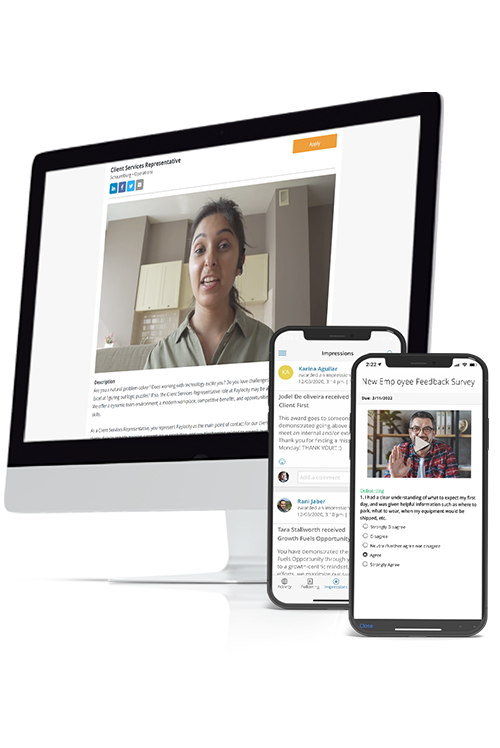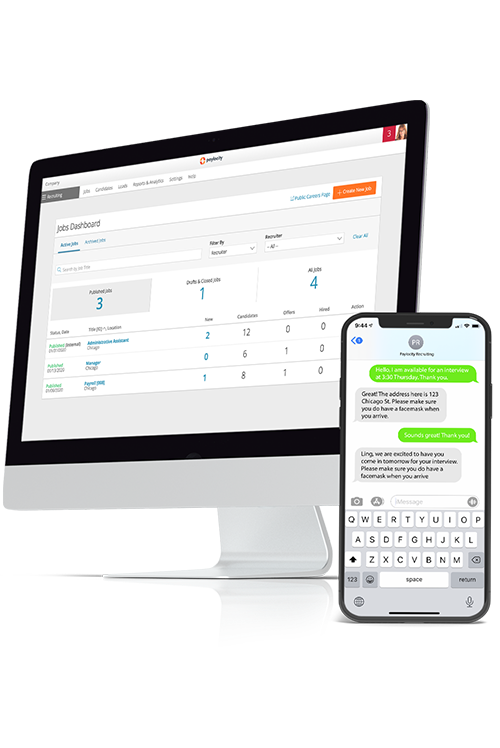Every pillar of your DEIA strategy is important and contributes to the success of your business. But here, we’ll focus on inclusion and how to foster it in the workplace.
Why Is Workplace Inclusion Important?
Research connects DEIA practices to highly favorable business outcomes. A recent study by TechTarget and Amazon Web Services found organizations who lead in DEIA maturity are more than twice as likely to see extensive positive impact on agility/innovativeness and brand perception.
Similarly, Paylocity research identified inclusion as one of the strongest predictors of employee retention. Higher retention saves organizations time and recruiting costs while preserving valuable institutional knowledge.
It makes sense. Employees who feel included are more engaged in their work, which leads to increased productivity and loyalty to your company.
Driving organizational success is the biggest benefit of DEIA. Of course, it’s also critical to stay compliant.
A Quick Look at DEIA Legislation
The U.S. Equal Employment Opportunity Commission (EEOC) is responsible for enforcing federal laws that make it illegal to discriminate against a job applicant or an employee. Many states and some cities have their own regulations as well.
|
Federal DEIA Law |
Description |
|
Civil Rights Act of 1964 |
Prohibits discrimination against employees and job applicants based on race, color, religion, sex, and national origin. |
|
Equal Pay Act |
Employers must pay employees of all sexes equally for performing substantially equal work under similar conditions. |
|
Age Discrimination in Employment Act |
Prohibits discrimination against employees or job seekers based on their age. |
|
Americans with Disabilities Act |
Prohibits discrimination against a qualified individual based on disability in employment and other areas of public life. |
|
Pregnancy Discrimination Act |
Prohibits employers from discriminating against women on the basis of pregnancy. |
|
Genetic Information Nondiscrimination Act |
Prohibits employers from using an individual’s genetic information when making employment decisions. |
|
Lily Ledbetter Act |
Prohibits any discriminatory compensation decisions. Each time wages, benefits, or other compensation is unlawfully paid may be considered a separate actionable event. |
Notice there’s no federal legislation that governs inclusion. Maintaining compliance with employment laws is just the first step to realizing maximum ROI from your DEIA efforts. Being intentionally inclusive creates a culture where all employees feel safe to bring their whole selves to work.
Learn More: HR Compliance 101: Fundamentals for HR Professionals
How to Build an Inclusive Workplace
Like most strategies, there is no single formula for getting DEIA right. Your workforce is continually evolving, so your DEIA strategy will always be a work in progress. As you design and refine your DEIA strategy, consider these tactics to keep inclusion front and center.
Tactic #1: Dig Into All Your Workforce Data
Before you start rolling out inclusion strategies in your workplace, take a moment to understand the current state of your workforce.
For companies with more than 100 employees (lower thresholds apply to federal contractors), the EEOC requires annual reporting by job category, sex, and race or ethnicity. In addition to this mandatory data collection, you may ask employees to volunteer additional information, such as preferred pronouns or disability status.
However, demographic data only tells part of your DEIA story. Systematically collecting feedback helps quantify employee perception, so leaders can prioritize efforts that will have the biggest impact on engagement and retention.
Do your employees feel included? How do you know?
Advanced survey instruments like Paylocity’s Employee Voice use statistically validated engagement and retention indicators, along with natural language processing (NLP), to take the guesswork out of employee sentiment data. In addition to inclusion, leaders can view favorability scores on several engagement drivers that influence an employee’s sense of belonging, such as peer relationships, recognition, and manager support.
Learn More: What Is HR Analytics and How Can It Help HR Management?
Tactic #2: Define Your DEIA Goals
Comprehensive data in hand, the next step is to identify opportunities for improvement. Are there patterns by location, department, or position you can address?
Think about long-term goals and the shorter-term objectives that will help you accomplish them. Both should be SMART (Specific, Measurable, Attainable, Relevant, Time-bound). For example, you might start with a broad goal: Bring in more diverse candidates. To break that down into objectives, what barriers can you remove to expand your reach?
- Source job applicants from more diverse channels.
- Offer a variety of benefits packages so individuals can access services that best fit their needs.
- Ensure fair and competitive pay and job advancement opportunities.
- Provide unconscious bias training for hiring managers.
Keep goals aligned with business outcomes to avoid tokenism. As you increase efforts to recruit a more diverse workforce, you also must adjust or vary inclusion efforts to engage and retain new and current employees.





